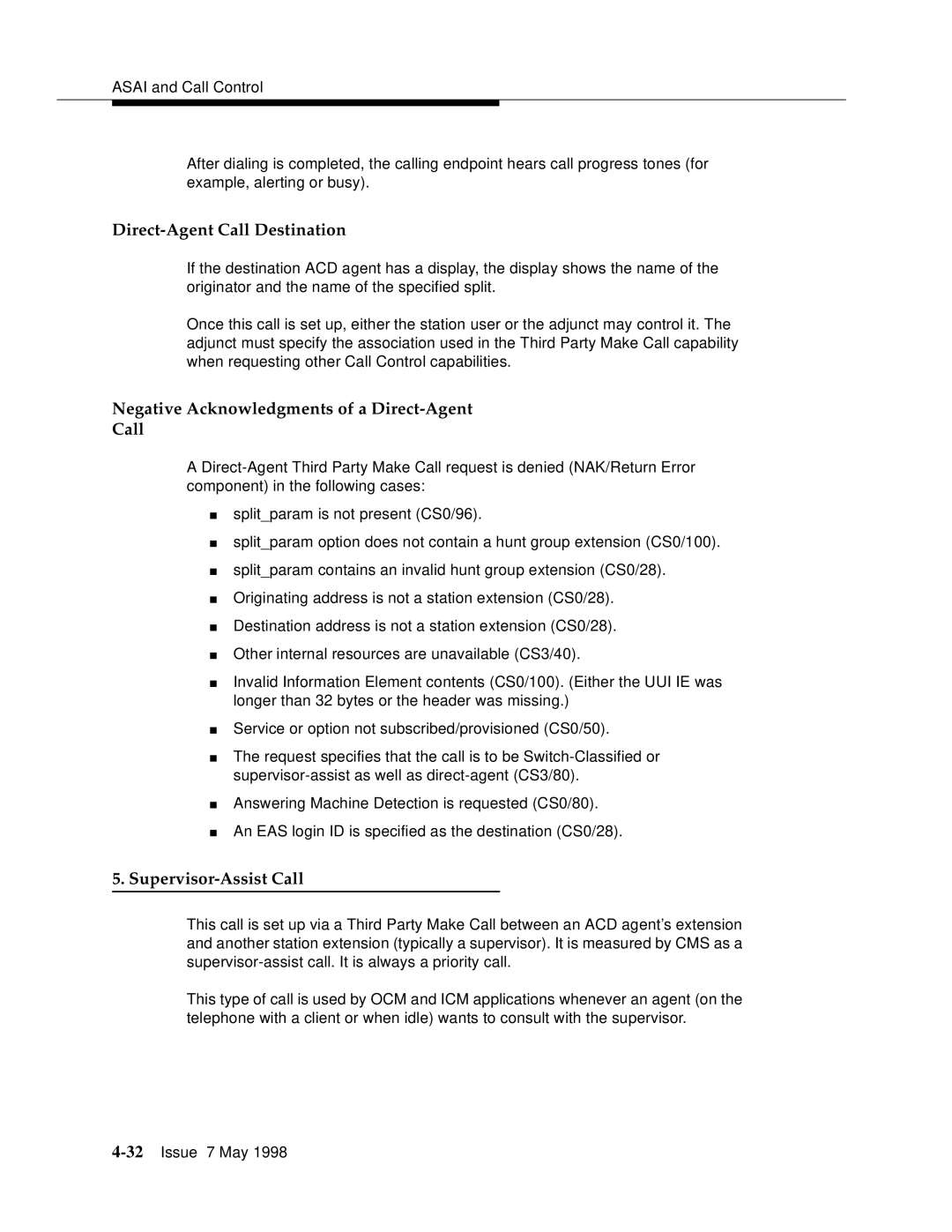
ASAI and Call Control
After dialing is completed, the calling endpoint hears call progress tones (for example, alerting or busy).
Direct-Agent Call Destination
If the destination ACD agent has a display, the display shows the name of the originator and the name of the specified split.
Once this call is set up, either the station user or the adjunct may control it. The adjunct must specify the association used in the Third Party Make Call capability when requesting other Call Control capabilities.
Negative Acknowledgments of a Direct-Agent
Call
A
■split_param is not present (CS0/96).
■split_param option does not contain a hunt group extension (CS0/100).
■split_param contains an invalid hunt group extension (CS0/28).
■Originating address is not a station extension (CS0/28).
■Destination address is not a station extension (CS0/28).
■Other internal resources are unavailable (CS3/40).
■Invalid Information Element contents (CS0/100). (Either the UUI IE was longer than 32 bytes or the header was missing.)
■Service or option not subscribed/provisioned (CS0/50).
■The request specifies that the call is to be
■Answering Machine Detection is requested (CS0/80).
■An EAS login ID is specified as the destination (CS0/28).
5.Supervisor-Assist Call
This call is set up via a Third Party Make Call between an ACD agent’s extension and another station extension (typically a supervisor). It is measured by CMS as a
This type of call is used by OCM and ICM applications whenever an agent (on the telephone with a client or when idle) wants to consult with the supervisor.
